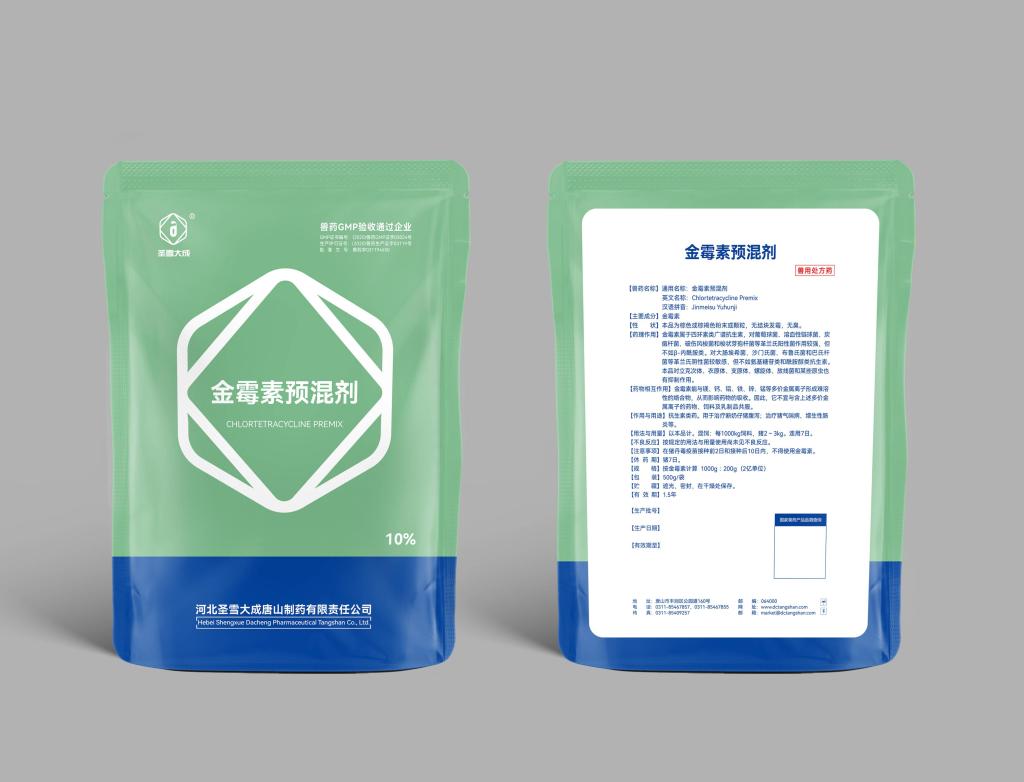
Tackling antimicrobial resistance with Chlortetracycline Premix.
TIME:2024-05-28
Antimicrobial resistance (AMR) poses a significant threat to public health, animal health, and food security worldwide. The emergence and spread of resistant bacteria undermine the effectiveness of antibiotics, leading to treatment failures and increased healthcare costs. In the context of livestock production, antimicrobial use in agriculture contributes to the development of AMR, highlighting the importance of responsible antibiotic stewardship. This article explores the role of Chlortetracycline Premix in tackling antimicrobial resistance, including its impact, challenges, and strategies for responsible use.
Understanding Antimicrobial Resistance
Antimicrobial resistance occurs when bacteria develop mechanisms to withstand the effects of antibiotics, rendering them ineffective in treating bacterial infections. Factors contributing to AMR include the overuse and misuse of antibiotics in human and veterinary medicine, as well as environmental contamination with antibiotic residues. AMR poses serious implications for public health, as it compromises the ability to treat common bacterial infections and increases the risk of transmission of resistant bacteria between humans and animals.
The Role of Chlortetracycline Premix
Chlortetracycline Premix, a commonly used antibiotic in livestock production, plays a dual role in addressing antimicrobial resistance. On one hand, Chlortetracycline Premix is effective in preventing and controlling bacterial infections in livestock, thereby reducing the need for therapeutic antibiotics and minimizing the risk of treatment failures due to AMR. On the other hand, responsible use of Chlortetracycline Premix, guided by principles of antibiotic stewardship, helps mitigate the development and spread of antimicrobial resistance in animal agriculture.
Mechanisms of Antimicrobial Resistance
-
Selection Pressure: Continuous exposure of bacteria to subtherapeutic levels of antibiotics, such as Chlortetracycline Premix in feed, creates selective pressure favoring the survival and proliferation of resistant bacteria.
-
Horizontal Gene Transfer: Bacteria can acquire resistance genes through horizontal gene transfer mechanisms, such as conjugation, transformation, and transduction, allowing them to spread resistance traits among bacterial populations.
-
Cross-Resistance: Resistance to one antibiotic, such as Chlortetracycline, can confer resistance to structurally related antibiotics, further limiting treatment options and exacerbating AMR.
Strategies for Responsible Use
-
Veterinary Oversight: Veterinarians play a crucial role in prescribing and overseeing the use of Chlortetracycline Premix in livestock production. Their expertise ensures appropriate diagnosis, treatment, and management of bacterial infections, while minimizing the risk of antimicrobial resistance emergence.
-
Proper Dosage Administration: Adhering to recommended dosage regimens and administration practices for Chlortetracycline Premix helps optimize treatment outcomes and minimize the likelihood of subtherapeutic antibiotic exposure, reducing the selection pressure for resistant bacteria.
-
Withdrawal Periods: Strict adherence to withdrawal periods specified on Chlortetracycline Premix labels ensures that antibiotic residues are below regulatory limits in animal products intended for human consumption, preventing the exposure of consumers to antimicrobial residues.
-
Monitoring and Surveillance: Regular monitoring of antimicrobial resistance patterns in bacterial pathogens isolated from livestock helps identify emerging resistance trends and guide appropriate treatment strategies. Surveillance programs facilitate early detection of resistance emergence and inform antimicrobial stewardship initiatives.
Challenges and Future Directions
Despite efforts to promote responsible antibiotic use, challenges remain in addressing antimicrobial resistance in livestock production. These include regulatory compliance, consumer perceptions, and the need for alternative disease prevention and control strategies. Moving forward, research into novel antimicrobial agents, vaccines, and management practices will complement existing efforts to mitigate AMR and ensure the sustainable use of antibiotics in agriculture.
Conclusion
Chlortetracycline Premix plays a pivotal role in tackling antimicrobial resistance in livestock production. Through responsible use practices, guided by principles of antibiotic stewardship, Chlortetracycline Premix helps preserve the effectiveness of antibiotics, safeguard animal health, and protect public health. By implementing comprehensive strategies for AMR mitigation and promoting collaborative efforts across sectors, we can address the global challenge of antimicrobial resistance and ensure the continued sustainability of livestock production.

 CONTACT
CONTACT




